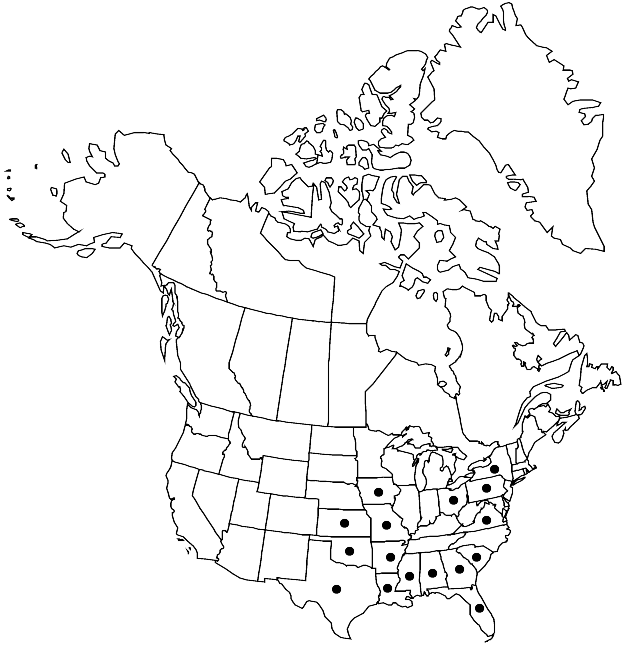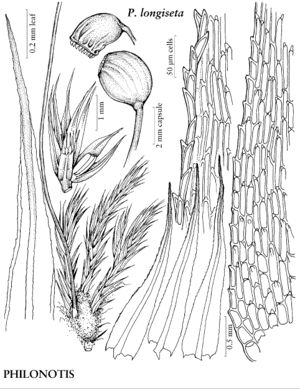Difference between revisions of "Philonotis longiseta"
Bryologist 14: 44. 1911.
FNA>Volume Importer |
imported>Volume Importer |
||
| Line 56: | Line 56: | ||
|publication year=1911 | |publication year=1911 | ||
|special status=Illustrated | |special status=Illustrated | ||
| − | |source xml=https:// | + | |source xml=https://bibilujan@bitbucket.org/aafc-mbb/fna-data-curation.git/src/bb6b7e3a7de7d3b7888a1ad48c7fd8f5c722d8d6/coarse_grained_fna_xml/V28/V28_169.xml |
|genus=Philonotis | |genus=Philonotis | ||
|species=Philonotis longiseta | |species=Philonotis longiseta | ||
Revision as of 22:42, 27 May 2020
Plants small, in lax to dense tufts, bright green, rufous proximally. Stems 1–3 cm, lax, simple or 2-fid, tomentose proximally. Leaves laxly erect to erect, sometimes secund when dry, erect-spreading when moist, narrowly triangular-lanceolate, 1–2.5 mm; margins narrowly revolute, serrulate nearly throughout, teeth single or paired; apex acuminate; costa excurrent, abaxial surface weakly papillose; laminal cells long, narrow, more than 9:1, prorulose, prorulae pointed, projecting at extreme distal ends of cells; basal cells rectangular, shorter, broader than distal, to 45 × 12 µm; distal cells linear, 30–65 × 5–7 µm. Specialized asexual reproduction absent. Sexual condition autoicous; perigonia gemmiform. Seta 1.5–3.5 cm, straight or flexuose. Capsule 1.8–2 mm. Spores reniform, 26–33 µm.
Phenology: Capsules mature Feb–Dec.
Habitat: Soil, rock, wet embankments
Elevation: low to moderate elevations
Distribution

Ala., Ark., Fla., Ga., Iowa, Kans., La., Miss., Mo., N.Y., Ohio, Okla., Pa., S.C., Tex., Va., Mexico, West Indies (Puerto Rico), Central America (Costa Rica, Guatemala), n South America (Venezuela).
Discussion
Philonotis longiseta can be recognized by its flat, narrowly triangular leaves with forward projecting prorulae at the distal ends of laminal cells throughout the leaf. The perigonia are lateral and found just proximal to the perichaetia.
Selected References
None.
